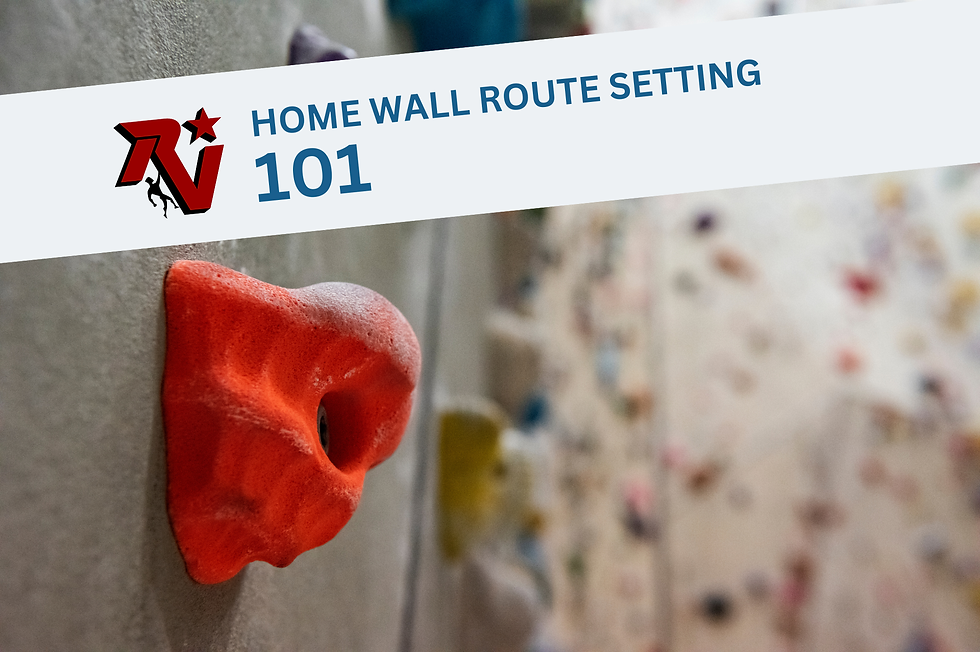A Beginner Hangboard Workout: Get Strong, Not Injured
- Dovi Hirsch
- Feb 17, 2021
- 3 min read
by Christopher Schafenacker

The first thing any beginner climber reading this should know is that there is no such thing as a beginner hangboard workout. The hangboard is a demon of a tool that is more likely to injure your joints and fingers than make you stronger—that is, at least until your body has endured a few years of continuous climbing and has developed the tendon strength to reign the demon in. Having said this, exceptional times call for exceptional measures. If you are a quarantined climber new to the sport but desperate to continuing improving, hangboarding can help…but only if done with restraint.
An Intro to Hangboard Training
The first hangboards were rugged, home-built contraptions that consisted of thin slats screwed to scrap wood. Modern devices are a little more sophisticated, with different designs serving different purposes. For your first, you’ll want a wooden hangboard with radiused holds, generous-sized edges (meaning 0.5 to 0.75 inches deep), and a set of sinker jugs. While resin boards are often cheaper, a wooden hangboard is a worthwhile indulgence no matter your climbing level. Not only is the material nicer to your skin but, when radiused—meaning edges are rounded—it also protects your pulleys from bruising or rupturing. And don’t worry: no matter the edge sizes you won’t outgrow your new toy any time soon. All that’s needed to take your hangboard training up a notch is a little added weight, after all, and if and when this isn’t enough you can move on to one-arm work.
A Beginner Hangboard Workout
Before you get started, there are three golden rules to not getting hurt by your hangboard:
1. Warm up. 2. Hang in either a half crimp or open-hand position. 3. Retract your shoulders.
The specifics of all of these are covered in this article from 99 Boulders.
Once you’ve mastered healthy hangboard technique, your next task is to find a set of edges you can just barely hold for 15 seconds in each of a half-crimp and open-hand position. If there are no such edges on your board, work out a way to remove weight by either picking up a set of resistance bands, toeing into a well-placed chair, or rigging a fancy pulley system. These edges will be those used in the exercises described below.
Exercise 1: Ten-Second Hangs (Half Crimp)
Start a stopwatch and at the beginning of minute one, hang for ten seconds in a half crimp position and then rest for fifty. Begin your next ten-second hang at the start of the minute two. Repeat for a total of three hangs, rest for three minutes, and then repeat twice (three sets total).
Exercise 2: Ten-Second Hangs (Open Hand)
Repeat the same protocol described above, this time hanging in an open-hand position.
Exercise 3: Frenchies
Hanging from your board’s jugs, pull up into a full lock-off position and hold for three slow seconds. Fully lower without disengaging your arms or coming off the board, pull back up and lower to a ninety-degree elbow bend. Hold for three seconds. Fully lower, pull back up, lower to a one-hundred and twenty-degree elbow bend and hold for three seconds. Fully lower and without disengaging or coming off the board repeat the entire cycle beginning by again holding a full lock-off for three seconds. Rest two minutes. Complete three sets.
Gains from hangboarding come slowly, especially for those new to the activity, and so do not rush your progression. The beginner hangboard workout described above can be repeated twice weekly and after every two-week cycle an additional set can be added to each exercise. After six weeks of continuous hangboarding, re-test your max hang to determine if you need to add weight or reduce the edge size in order to reach failure after 15 seconds.
Featured Climbing Training Gear
*NEW* The Rocketeer Wall: our free-standing adjustable solution for those who can’t mount a hangboard anywhere in their home or apartment—or who are limited on space. The Rocketeer gives climbers the additional option to set specific climbing holds. Recreate the crux holds of your proj and get ready to send, bruh.
The Rocket Wall: Available in 6’ and 8’ widths, it’s been tough for us to keep up with the demand for this innovative home climbing wall solution. Slightly overhanging, the Rocket Wall is big enough to set routes on, or to build a systems board.
The Rock-Stah: Our handcrafted version of a traditional hangboard, with curving crimp rails to help alleviate unnecessary strain on your pulleys. Because ain’t no one got time for a finger injury…










Comments